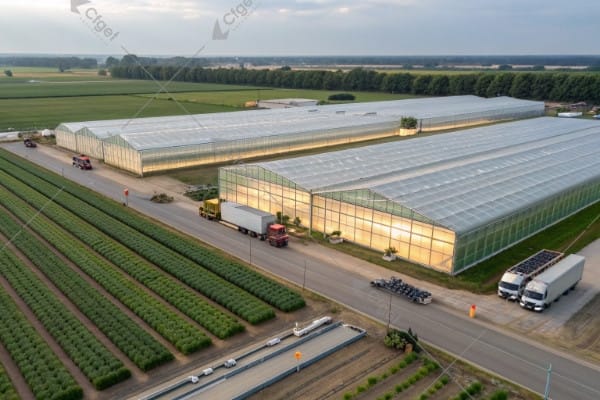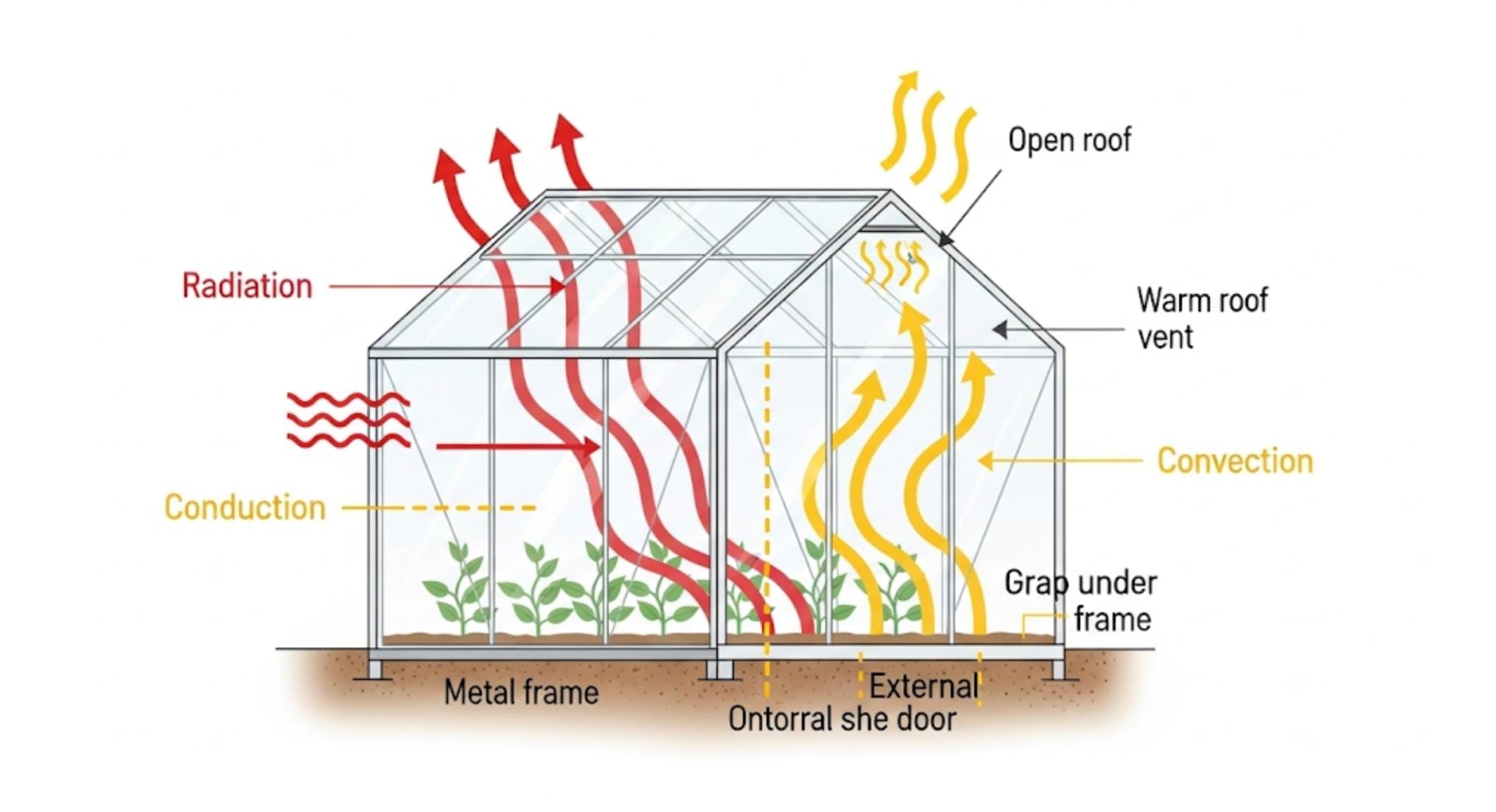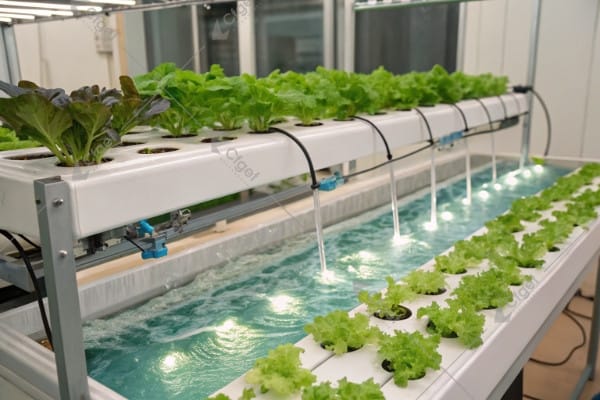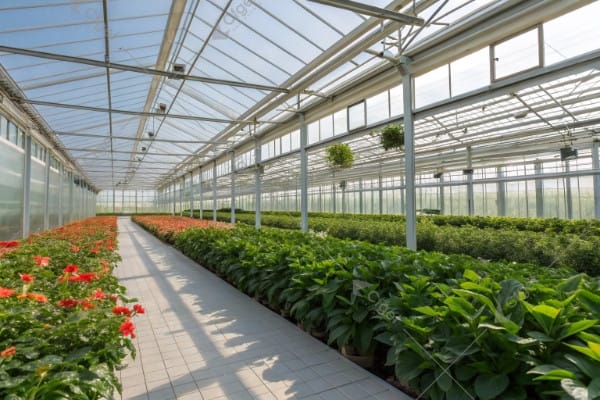Growing plants successfully requires the right environment, but many growers struggle with inconsistent results due to unpredictable weather patterns. Without proper protection, your plants remain vulnerable to nature’s whims.
Freestanding greenhouses provide the perfect solution by creating controlled growing environments that protect crops from weather extremes while maximizing sunlight exposure. These standalone structures offer flexibility in placement, easier climate management, and cost-effective entry into protected cultivation.
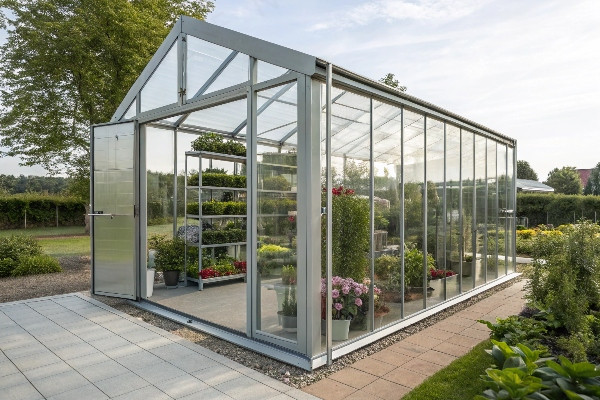
I’ve been designing and building greenhouses for over 28 years, and one thing remains constant – the satisfaction on a grower’s face when they walk into their first freestanding greenhouse. The transformation is immediate and profound. Plants that once struggled in open fields suddenly thrive in these protected environments. It’s like watching a slow-motion miracle unfold over growing seasons.
Don’t Miss:——Growing Perfect Tomatoes: Why a Greenhouse Makes All the Difference
Understanding the Benefits of a Standalone Greenhouse Structure?
Many growers struggle with the limitations of outdoor cultivation, facing crop losses from unexpected weather events and shortened growing seasons. These challenges can make consistent production nearly impossible.
Freestanding greenhouses create protected growing spaces with complete environmental control. They extend growing seasons by 2-3 months, protect plants from extreme weather, pests, and diseases, and allow for precise management of temperature, humidity, and ventilation – all while maintaining the simplicity of a single-span design.
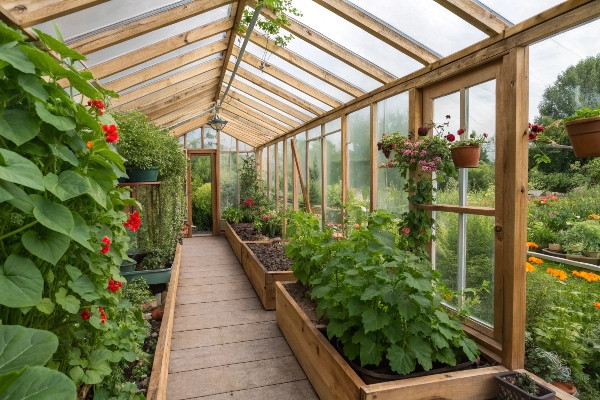
I recall working with a small-scale vegetable grower in a region plagued by unpredictable spring frosts. Year after year, early plantings were damaged or destroyed, forcing them to delay planting and miss the premium early market prices. After installing a modest 8-meter freestanding greenhouse, they started planting six weeks earlier than their open-field neighbors. The financial impact was immediate – their tomatoes and peppers reached market when prices were highest, transforming their business model overnight.
What makes freestanding greenhouses so effective is their elegant simplicity. In the industry, we refer to these structures as "single-span" greenhouses because they stand alone as complete units rather than being connected to other structures. This independence offers several distinct advantages that larger, multi-span complexes can’t match.
First, their standalone nature means complete flexibility in orientation and positioning. You can align the structure precisely to maximize sunlight exposure based on your specific location and growing needs. This optimal orientation can increase light levels by up to 25% during critical winter months compared to poorly oriented structures.
The controlled environment within a freestanding greenhouse becomes your greatest asset. During cold months, these structures capture solar radiation, creating microclimate conditions that can be 10-15°C warmer than outside temperatures, even without supplemental heating. This temperature differential extends growing seasons substantially, allowing earlier spring planting and later fall harvests.
Pest and disease management becomes significantly easier as well. The enclosed space serves as a physical barrier against many insects, animals, and airborne pathogens. With proper management practices, many growers reduce pesticide use by 50-75% compared to field production. This not only lowers input costs but also aligns with growing consumer demand for reduced chemical use.
Freestanding structures also excel in ventilation efficiency. With proper vent placement along roof ridges and side walls, these greenhouses achieve superior natural air circulation. The smaller contained volume of air can be exchanged more rapidly than in larger structures, helping to prevent humidity-related disease issues that often plague enclosed growing environments.
For those in regions with seasonal weather extremes, freestanding greenhouses offer remarkable resilience. The compact footprint and rounded arch design of many models shed wind effectively and resist snow loading better than larger, flatter structures. This structural integrity provides peace of mind during challenging weather conditions.
You might like:——The Ultimate Guide to Commercial Strawberry Greenhouses: Boost Your Yield & Profits
Is a Freestanding Greenhouse Right for Your Needs? (Pros & Cons)?
Choosing the wrong greenhouse structure can lead to years of frustration and underperformance. Many growers invest in complex systems they don’t need or choose insufficient structures that limit future growth.
Freestanding greenhouses shine for small to medium operations (typically under 1000m²), new growers, and specialized crop production. They offer lower initial investment, simplified management, and easier environmental control, though they provide less economy of scale than multi-span complexes for larger operations.
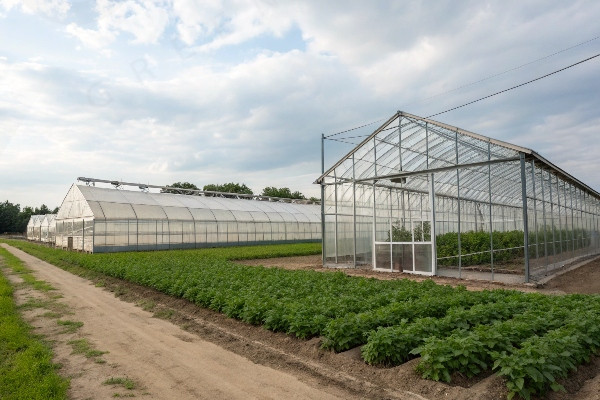
I’ve guided hundreds of growers through the greenhouse selection process, and the question of freestanding versus multi-span connected structures is often central to our discussions. The decision affects not just initial costs but long-term operational success. Let me walk you through the key considerations that should guide your choice.
Freestanding greenhouses provide clear advantages for certain situations. For new growers, they offer an ideal entry point into protected cultivation. The investment remains manageable, typically 30-40% less per square meter than larger connected structures. This reduced financial risk allows you to learn greenhouse management principles without overextending yourself financially. I often advise first-time greenhouse operators to start with a single freestanding unit, master its operation, and then expand as their expertise and market develop.
Scale considerations play a crucial role in this decision. Freestanding structures typically range from 8-12 meters in width, with lengths varying according to need. For operations requiring less than 1000m² of protected growing space, single-span structures often provide the ideal solution. Their simplified management makes them particularly suitable for operations with limited staff or those growing high-value specialty crops that benefit from isolated growing environments.
The environmental control advantages can’t be overstated. Because each freestanding greenhouse functions as its own microclimate, you can tailor conditions precisely to different crops or growth stages. Many diversified growers maintain several freestanding structures with different temperature, humidity, and irrigation regimes for various crops. This specialized environmental control becomes much more challenging in larger connected structures where conditions tend to be more uniform throughout.
There are, however, limitations to consider. As operations scale beyond 1000m², the economics begin to favor multi-span connected structures. The wall-to-floor ratio becomes less efficient in multiple freestanding units, increasing both construction costs and heating expenses. Labor efficiency can also decrease when managing multiple separate structures versus a single larger one.
Heating and cooling costs typically run 15-25% higher in freestanding structures compared to equivalent space in connected greenhouses. This is simply a function of the greater exterior surface area exposed to ambient conditions. If your operation requires precise temperature control in harsh climates, these increased energy costs should factor into your long-term planning.
Space utilization presents another consideration. Freestanding greenhouses require access paths between structures, potentially reducing your land-use efficiency by 10-15% compared to connected greenhouses. If land availability or cost represents a significant constraint, this factor becomes increasingly important.
Finally, expansion flexibility differs between these options. While freestanding greenhouses can be added incrementally as needed, each addition requires complete end walls and separate environmental control systems. Connected greenhouse complexes, once established, can often be expanded more economically by simply extending the structure and environmental systems.
Essential Factors for Siting and Building a Freestanding Greenhouse?
Improper greenhouse siting causes countless failures through poor light exposure, excessive energy costs, or vulnerability to environmental damage. One wrong decision about location or orientation can undermine even the best greenhouse design.
Successful freestanding greenhouse placement depends on maximizing southern exposure (northern hemisphere), providing protection from prevailing winds, ensuring proper drainage, maintaining accessibility for equipment, and considering future expansion needs. Proper site preparation creates the foundation for years of productive growing.
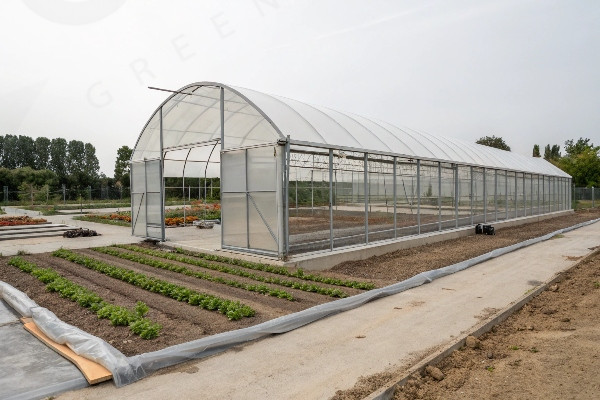
When I consult with clients on greenhouse placement, I often share the story of two nearly identical operations located just five kilometers apart. One flourishes while the other struggles with persistent problems – all stemming from initial siting decisions. The successful grower took time to analyze sun patterns, wind exposure, and drainage before breaking ground. The struggling operation prioritized convenience, placing their greenhouse in a partially shaded location with poor air circulation. The difference in crop performance has been remarkable, highlighting how critical proper siting remains.
The first consideration in greenhouse placement1 must always be sunlight exposure. In the northern hemisphere, the ideal orientation typically positions the greenhouse with its length running east to west. This orientation maximizes southern exposure during winter months when light levels are most limited. Tracking the sun’s path across your specific property throughout the year can reveal optimal placement. Remember that even a 10% reduction in light during winter can significantly impact plant growth and development.
Wind patterns deserve equal attention. While freestanding greenhouses need ventilation, constant exposure to strong prevailing winds increases heating costs and may damage covering materials2 over time. Natural windbreaks like tree lines (positioned far enough away to avoid shading) or constructed windbreaks can reduce wind velocity by 30-50% without blocking essential airflow. Measuring wind patterns across seasons helps identify the best protective strategies for your specific location.
Water management often gets overlooked until problems arise. Proper drainage prevents water accumulation around the greenhouse perimeter, which can increase humidity, promote disease, and potentially undermine structural footings. Ideally, the greenhouse should sit slightly elevated from surrounding terrain with a gentle slope away from the structure in all directions. For areas with heavy rainfall or poor natural drainage, French drains or other water management systems may prove necessary.
Accessibility considerations impact daily operations and long-term efficiency. Ensure adequate space for equipment access, material deliveries, and potential snow removal in applicable climates. Walkways and work areas should accommodate the largest equipment you’ll use, with extra clearance for safe operation. Many growers underestimate space needs, creating workspace bottlenecks that hamper productivity.
Utilities access significantly impacts both initial construction costs and ongoing operations. Water, electricity, and potentially natural gas or propane lines need to reach your greenhouse location. Placing the structure unnecessarily far from existing utility access can add thousands to project costs. Conversely, positioning too close to overhead power lines may create safety hazards or limit construction options.
Future expansion possibilities should influence even initial standalone greenhouse placement. I always recommend that clients develop a master plan that considers potential additions even if they’re years away. Proper spacing between structures (typically minimum 3-4 meters) ensures adequate light penetration, air circulation, and maintenance access when multiple greenhouses eventually occupy the site.
Regulatory compliance varies widely by location but should never be an afterthought. Local zoning ordinances, building codes, water rights, and agricultural regulations may all impact greenhouse placement1 and construction. Some areas require specific setbacks from property lines, environmental reviews for commercial structures, or permits for water usage. Investigating these requirements early prevents costly alterations or relocations later.
Comparing Freestanding Greenhouse Designs and Materials?
Greenhouse material selection often overwhelms growers with technical specifications and conflicting claims. Choosing inappropriate materials can lead to premature failures, excessive maintenance, or environments unsuitable for intended crops.
The three main covering options for freestanding greenhouses—polyethylene film, polycarbonate panels, and glass—each offer distinct advantages. Film provides economical short-term solutions, polycarbonate offers excellent insulation and durability at mid-range prices, while glass delivers superior light transmission and longevity for premium applications.
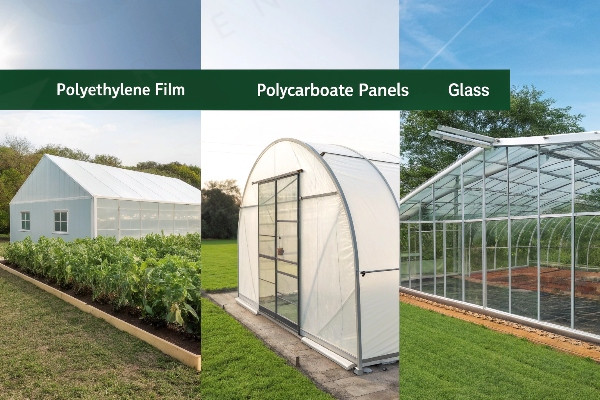
I vividly remember visiting a client who had invested heavily in an impressive glass-covered freestanding greenhouse, only to struggle with overheating issues during summer months. Despite the premium materials, the structure lacked adequate ventilation design for their climate zone. The lesson was clear – material selection must work in harmony with overall design principles for any greenhouse to function properly.
When evaluating freestanding greenhouse options, frame design establishes the foundation for everything else. The most common designs include curved arch (Quonset-style), Gothic arch with peaked roofs, and A-frame structures. Each offers distinct advantages depending on your climate and growing objectives. Curved arch designs shed rain and snow effectively while maximizing interior space for their footprint. Gothic arch structures provide better headroom near sidewalls and superior snow shedding capabilities for heavier snowfall regions. A-frame designs offer excellent stability in high-wind areas but sacrifice some interior space efficiency.
For frame materials, galvanized steel has become the industry standard for most commercial applications, providing an optimal balance of strength, longevity, and cost-effectiveness. Aluminum frames offer excellent corrosion resistance and light weight but at a premium price point and with less structural strength. Wood frames, while aesthetically pleasing and potentially more affordable initially, require significantly more maintenance and typically have shorter lifespans in humid greenhouse environments.
Covering materials present perhaps the most consequential choice affecting both initial costs and long-term performance. Polyethylene film (often called poly film) provides the most economical option, with material costs approximately 80-90% less than rigid alternatives. Modern greenhouse films incorporate UV stabilizers, infrared retention properties, and anti-condensation treatments. These films typically last 4-6 years before requiring replacement, making them ideal for growers with limited initial capital or those testing new growing systems. The excellent light diffusion properties of many films create even lighting throughout the greenhouse, reducing plant stress from harsh direct sunlight.
Polycarbonate panels represent the mid-range option, offering significantly greater durability and insulation value. These twin or triple-wall panels trap air between layers, creating insulation that can reduce heating costs by 30-40% compared to single-layer materials. With typical lifespans of 10-15 years, they balance longevity with moderate upfront costs. The diffused light transmission (typically 80-85%) creates excellent growing conditions for most crops, though slightly less total light passes through compared to glass. Their light weight and impact resistance make them especially suitable for areas with hail or falling debris concerns.
Glass coverings provide the premium option, offering superior light transmission (up to 90-95%) and the longest lifespan, often exceeding 25+ years with proper maintenance. Modern tempered or laminated greenhouse glass provides strength and safety advantages over traditional glazing. The exceptional clarity creates ideal conditions for light-hungry crops and maintains better light levels during winter months when sun angles are low. However, the higher initial cost (typically 3-4 times that of polycarbonate) and increased structural requirements to support the heavier material must be justified by your specific growing objectives and business model.
Ventilation systems carry equal importance to covering materials2 in determining greenhouse success. Natural ventilation through roof and sidewall vents works effectively for many freestanding structures, using the chimney effect to circulate fresh air. Mechanical ventilation through exhaust fans and intake shutters provides more precise control but adds operational costs. Many successful designs incorporate both systems – natural ventilation for everyday use and mechanical systems for extreme conditions. Properly sized ventilation should allow for complete air exchange every 1-2 minutes during peak summer conditions.
For connecting components, the fastener system determines both construction complexity and long-term maintenance requirements. With spans typically limited to 8-12 meters for freestanding structures, fastener connections rather than welded joints are standard. This approach allows for easier assembly and potential future modifications but requires periodic maintenance to ensure continued structural integrity, especially in areas with freeze-thaw cycles or high humidity.
Conclusion
Freestanding greenhouses offer an ideal balance of affordability, environmental control, and simplicity for small to medium-scale growing operations. By carefully selecting the right site, design, and materials for your specific needs, you can create a productive growing environment that extends seasons and improves crop quality while maintaining manageable investment levels.
Understanding greenhouse placement is crucial for maximizing sunlight exposure and ensuring optimal plant growth. Explore this resource for expert insights. ↩ ↩
Choosing the right covering materials is vital for greenhouse efficiency and crop success. This resource provides a detailed comparison to help you decide. ↩ ↩

